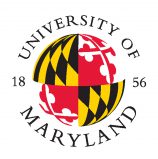
MONDAY SYMPOSIUM IN MEASUREMENT AND STATISTICS (MSMS)
UNIVERSITY OF MARYLAND
together with
OHIO STATE UNIVERSITY, UNIVERSITY OF NORTH CAROLINA AT CHAPEL HILL*
UNIVERSITY OF NOTRE DAME
(* Organizer of this talk)
This presentation describes a benchmark method to validate statistical methods from the analysis of data on a known or established empirical effect. There are aspects to benchmark validation that complement mathematical derivations and simulations. The method may be useful for evaluating the accuracy of causal conclusions from a statistical method. I apply the method to statistical mediation analysis of the process by which imagery increases recall of words. I discuss strengths and limitations of the method.
MacKinnon, D. P., Valente, M. J., & Wurpts, I. C. (2018). Benchmark validation of statistical mediation analysis: Application to imagery and memory theory. Psychological Methods, 23 (4), 854-671. http://dx.doi.org/10.1037/met0000174
Presented by: Dr. David P. MacKinnon
Department of Psychology, Arizona State University
Date & Time: February 22, 2021 / 12:30pm – 1:30pm EST
Join via Zoom: Click this link
Abbreviated Professional Bio:
David P. MacKinnon, Ph.D., has been developing, evaluating, and applying methods to assess how interventions work for over 35 years. He is a Foundation Professor of Psychology at Arizona State University. In 2011, he received the Nan Tobler Award from the Society for Prevention Research for his book on statistical mediation analysis. Dr. MacKinnon has been Principal Investigator on several National Institute on Health grants. He received the Merit Research in Time Award from the National Institute on Drug Abuse for his research on mediation analysis, and is a Web of Science highly cited researcher. He is president of the Society for Multivariate Experimental Psychology and former president of the American Psychological Association Division 5.


